Today On “rules Of English Language I Didn’t Realise Were A Thing Until Someone Pointed It Out”
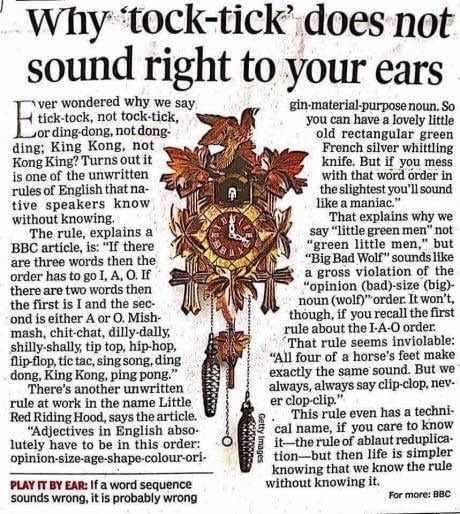
Today on “rules of English language I didn’t realise were a thing until someone pointed it out”
More Posts from Theperpetualscholar and Others

In the left column starting at the top they are Orchard Oriole, Red-winged Blackbird, Eastern Towhee, Northern Cardinal, American Robin and Gray Catbird. And in the right column from the top they are Blue Jay, Carolina Chickadee, Song Sparrow, Field Sparrow, Chipping Sparrow and Seaside Sparrow.
source:

Christopher Monroe spends his life poking at atoms with light. He arranges them into rings and chains and then massages them with lasers to explore their properties and make basic quantum computers. Last year, he decided to try something seemingly impossible: to create a time crystal.
The name sounds like a prop from Doctor Who, but it has roots in actual physics. Time crystals are hypothetical structures that pulse without requiring any energy — like a ticking clock that never needs winding. The pattern repeats in time in much the same way that the atoms of a crystal repeat in space. The idea was so challenging that when Nobel prizewinning physicist Frank Wilczek proposed the provocative concept1 in 2012, other researchers quickly proved there was no way to create time crystals.
But there was a loophole — and researchers in a separate branch of physics found a way to exploit the gap. Monroe, a physicist at the University of Maryland in College Park, and his team used chains of atoms they had constructed for other purposes to make a version of a time crystal2 (see ‘How to create a time crystal’). “I would say it sort of fell in our laps,” says Monroe.
And a group led by researchers at Harvard University in Cambridge, Massachusetts, independently fashioned time crystals out of 'dirty’ diamonds3. Both versions, which are published this week in Nature, are considered time crystals, but not how Wilczek originally imagined. “It’s less weird than the first idea, but it’s still fricking weird,” says Norman Yao, a physicist at the University of California, Berkeley, and an author on both papers.
Continue Reading.
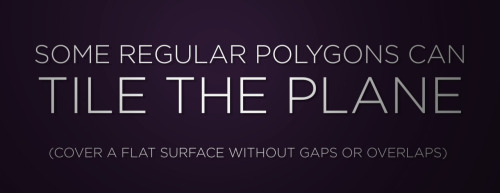
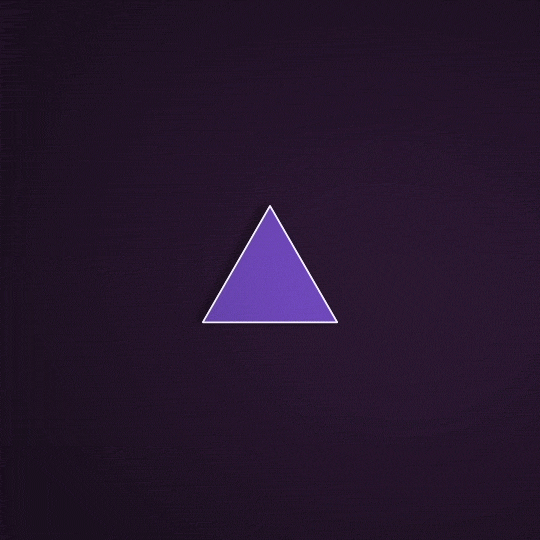
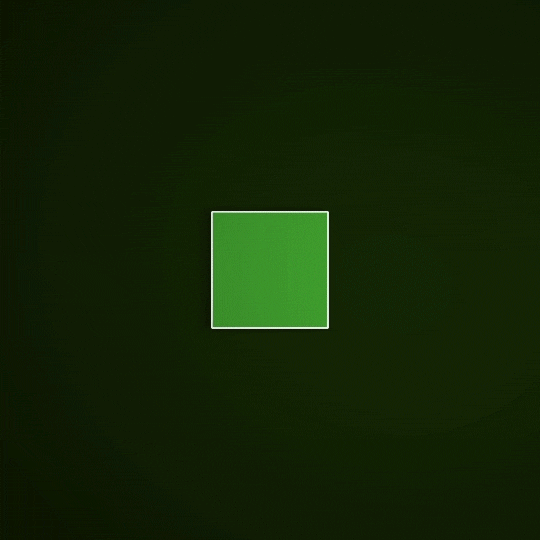
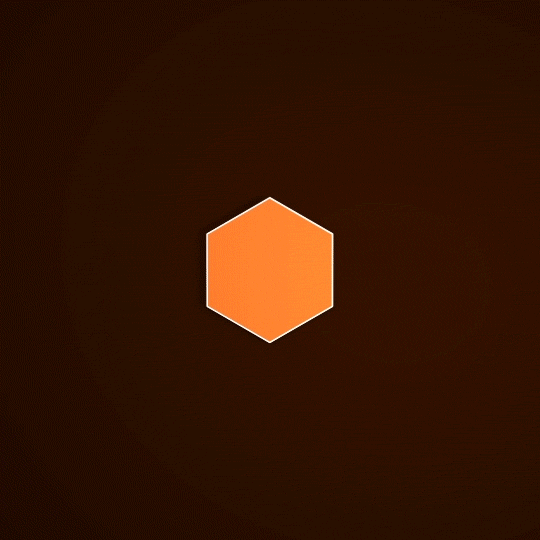

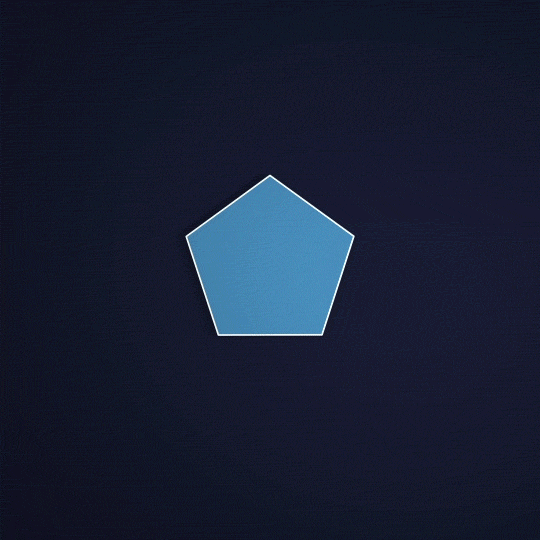
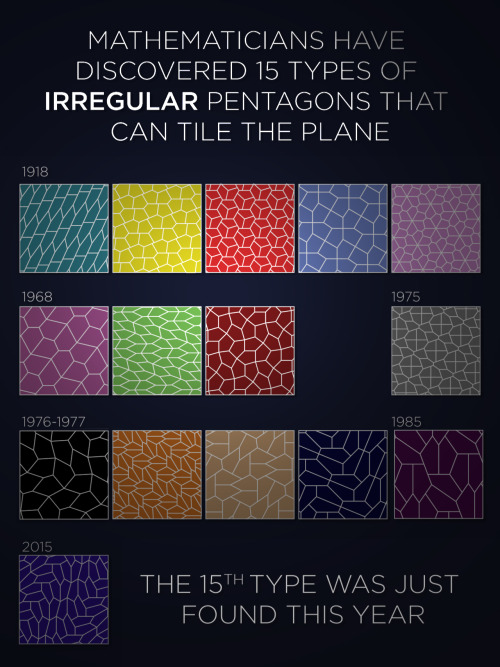
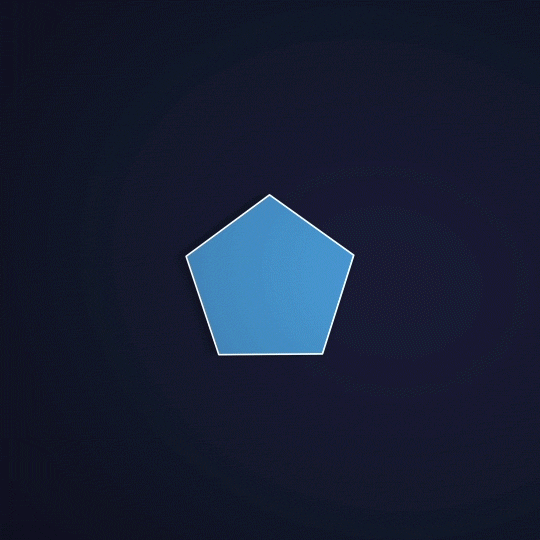
Big math news! It’s been thirty years since mathematicians last found a convex pentagon that could “tile the plane.” The latest discovery (by Jennifer McLoud-Mann, Casey Mann, and David Von Derau) was published earlier this month. Full story.
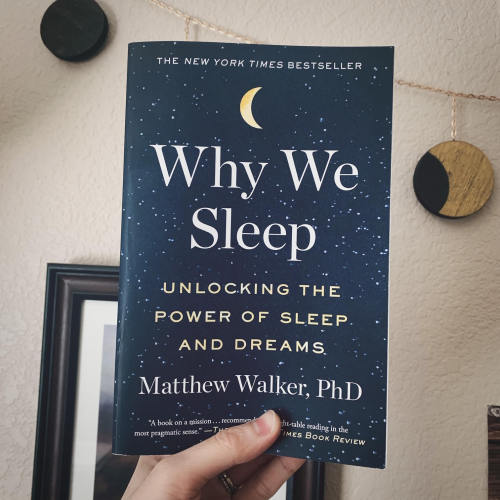
Why We Sleep: Unlocking the Power of Sleep and Dreams by Matthew Walker
THIS BOOK is life changing. (Even Bill Gates thought so!) I learned so much, and not just scientific facts that satisfy my curiosity. My (seemingly defunct) sleep habits have been validated, and I’m now empowered with ways to drastically improve my physical, mental, and emotional health. Ever since finishing the book I’ve been enthusiastically telling others to please read it.
Some things I’ve personally learned:
Being a night owl, early bird, or somewhere in the middle is genetic. We literally can not change this “habit”, because it’s not a habit; it’s a biological function. About 40% of people are early birds, 30% are night owls, and 30% are in the middle. The theory as to why we’ve evolved this way is because as a social species, this natural ability to take turns keeping watch at night improves our survival as a whole. Thus we as a society need to rethink and rework the ways that our world favors early birds and shuns night owls.
All teenagers have a shift in circadian rhythm that is different than young children and adults. They literally can not naturally fall asleep until well past midnight, and thus should not be waken up until after their 8 hours of sleep. What parents–and society–expecting teens to go to bed by 10 pm and wake up by 6 or 7 am for school is like asking an adult to go to bed at 7 or 8 pm, and then wake up at 4 am. Horrible, right? And yes, that chronic sleep-deprivation does have real consequences, such as a link to increased physical and mental illness.
The natural human sleep schedule is a continuous 7-8 hours at night, and a brief 30 - 60 min nap in the afternoon. Studies have shown that in cultures where this schedule has been suddenly disrupted (like a study in Greece), people with no history of cardiovascular disease suddenly showed a 37% increase in the chance of dying from heart disease (vs those who still maintained a mid-day napping schedule) over the 6-year study period. Yikes.
Oh, btw, that whole observation in Western Europe about people sleeping in 2 segments in the night (and waking up in the middle to eat, socialize, etc) is not a biological thing, but rather, cultural. That is not how humans have evolved to sleep.
I think we’re all kind of familiar with knowing that sleep is attached to remembering facts, but sleep is also necessary for learning new facts. Thus a good night’s rest is not just essential for doing well on tomorrow’s exam, but also for remembering tomorrow’s lecture in another class. To put it another way: you retain short-term memories in the hippocampus, but it has a storage limit (like a USB stick). Thus sleep helps move those memories into long-term storage so you can remember them, and by doing so, also frees up that space for new memories.
Sleep is also essential for learning new motor skills. If you’re having trouble with say, playing a difficult piece on the piano, try again after a full night’s rest. When you’re sleeping, your brain is still actively working perfecting that sequence of piano keys you need to press. Thus the adage of “practice makes perfect” should be amended to “practice and sleep makes perfect”.
Sleeping 6 hours/night for 10 days straight will cause a cognitive decline equivalent to staying up for 24 hours straight. And for those of us who keeps that exact same sleep schedule and think we’re “fine”, we really don’t realize how not fine we are because we think that’s our baseline normal. If you’ve ever wished to have more energy and be more productive, sleeping more may just be your magical wish-granting-genie.
Every hour in the US someone dies from a car accident caused by someone behind the wheel not getting enough sleep, due to the brain essentially “blacking out” to outside stimulus for a few seconds during a micro-sleep. As a perspective: a drunk driver is merely slow at reacting to say, slamming the brakes; a sleep-deprived driver going through a micro-sleep doesn’t react at all.
Heart attacks across the US spike significantly the day following daylights savings when everyone loses an hour of sleep. The opposite is true when we gain back that hour in the fall: heart attacks drop the following day. And that’s just one piece of evidence that sleep supports a healthy heart.
Sleeping 4 hours/night for just six nights increases your blood glucose levels so much you would be classified as pre-diabetic.
It’s well known that alcohol can disrupt REM sleep. What was interesting is that alcohol-disrupted sleep can interfere with memory (and thus learning) even up to three nights later, even if you get 2 full nights of sleep before consuming alcohol. Therefore, if you have an exam on Monday, drinking on the Friday before will interfere with remembering everything you’ve studied the previous 2 days.
Blue light, like those emitted from LED lightbulbs and the phone/tablet/computer screen you’re reading this from, stimulates our brain to wake-up and to stay awake. The evolutionary hypothesis for this is that we–and all land animals–evolved from marine life in the ocean, where the only visible light is blue, and therefore our brains recognize blue light as a cue to wake up.
And that’s just a small fraction of the super interesting life-changing things I gained from this book. So if you found these tid-bits fascinating, I highly suggest checking it out!
The First Pizza Joint
Antica Pizzeria Port'Alba, in Naples, Italy, is widely considered the world’s first pizzeria. It was first established in 1738 as a peddler’s stand. In 1830, it became a brick-and-mortar restaurant in the town center. Since its opening day, their ovens have been lined with lava rocks taken from nearby Mount Vesuvius.











Climate Change
man it’s so wild to me that the greeks literally thought that a large number of women’s ailments were caused by their wombs (which they believed to be a weird animalistic thing living in women’s bodies) just picking up and migrating all over the place (fun fact, the word hysteria comes from this nonsense), and while that’s horribly misogynistic and terrible i can’t say i wouldn’t milk that shit for all it’s worth if i lived in ancient greece
like, gotta go harvest the crops? sorry dude, womb’s all up in my arms, can’t do anything about it
want me to weave something? love to but the ol womb’s at it again, you know how it is
got caught making out with the neighbor’s wife? haha man that womb of mine sure is a riot
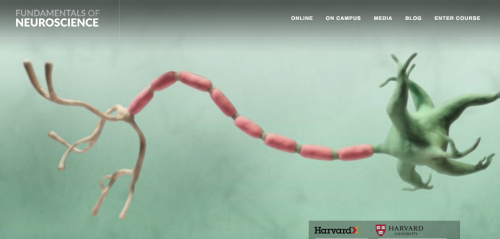
Harvard University offers a completely free online course on the Fundamentals of Neuroscience that you can get a certificate for successfully completing and which requires nothing other than basic knowledge in Biology and Chemistry. This excites me! Here’s the website
-
 my-ted-talk reblogged this · 1 month ago
my-ted-talk reblogged this · 1 month ago -
 terri104 reblogged this · 3 months ago
terri104 reblogged this · 3 months ago -
 cunning-linguistix reblogged this · 3 months ago
cunning-linguistix reblogged this · 3 months ago -
 terri104 liked this · 4 months ago
terri104 liked this · 4 months ago -
 taoduck reblogged this · 4 months ago
taoduck reblogged this · 4 months ago -
 witch-of-dreams-and-literature reblogged this · 4 months ago
witch-of-dreams-and-literature reblogged this · 4 months ago -
 ravenink37 liked this · 4 months ago
ravenink37 liked this · 4 months ago -
 ellsterthinks reblogged this · 4 months ago
ellsterthinks reblogged this · 4 months ago -
 mentallyimwrappedinablanket reblogged this · 5 months ago
mentallyimwrappedinablanket reblogged this · 5 months ago -
 gregnantwithdirt liked this · 5 months ago
gregnantwithdirt liked this · 5 months ago -
 xxbloodyknivesxx liked this · 5 months ago
xxbloodyknivesxx liked this · 5 months ago -
 imgonnapissmyselfomg liked this · 5 months ago
imgonnapissmyselfomg liked this · 5 months ago -
 m1k0l-tr4v15-turb0 liked this · 5 months ago
m1k0l-tr4v15-turb0 liked this · 5 months ago -
 artesian-diff liked this · 5 months ago
artesian-diff liked this · 5 months ago -
 virdiaura liked this · 5 months ago
virdiaura liked this · 5 months ago -
 spidrsharks liked this · 5 months ago
spidrsharks liked this · 5 months ago -
 silkiisso liked this · 5 months ago
silkiisso liked this · 5 months ago -
 reallapiscake12 reblogged this · 5 months ago
reallapiscake12 reblogged this · 5 months ago -
 euclidity liked this · 5 months ago
euclidity liked this · 5 months ago -
 ar-gemlad reblogged this · 5 months ago
ar-gemlad reblogged this · 5 months ago -
 goldenpariah reblogged this · 5 months ago
goldenpariah reblogged this · 5 months ago -
 11monsterman liked this · 5 months ago
11monsterman liked this · 5 months ago -
 raven0usravi0lii reblogged this · 5 months ago
raven0usravi0lii reblogged this · 5 months ago -
 therewasneveranyonebeforethis reblogged this · 5 months ago
therewasneveranyonebeforethis reblogged this · 5 months ago -
 therewasneveranyonebeforethis liked this · 5 months ago
therewasneveranyonebeforethis liked this · 5 months ago -
 spazmatics liked this · 5 months ago
spazmatics liked this · 5 months ago -
 roczath reblogged this · 5 months ago
roczath reblogged this · 5 months ago -
 ja-pan-ese liked this · 5 months ago
ja-pan-ese liked this · 5 months ago -
 child-of-the-internet reblogged this · 5 months ago
child-of-the-internet reblogged this · 5 months ago -
 haveahearttinman reblogged this · 5 months ago
haveahearttinman reblogged this · 5 months ago -
 haveahearttinman reblogged this · 5 months ago
haveahearttinman reblogged this · 5 months ago -
 gayrfalcon liked this · 5 months ago
gayrfalcon liked this · 5 months ago -
 oneiro-nautical reblogged this · 5 months ago
oneiro-nautical reblogged this · 5 months ago -
 weepingpussywillowtree reblogged this · 5 months ago
weepingpussywillowtree reblogged this · 5 months ago -
 weepingpussywillowtree liked this · 5 months ago
weepingpussywillowtree liked this · 5 months ago -
 prommethium reblogged this · 5 months ago
prommethium reblogged this · 5 months ago -
 northrue reblogged this · 6 months ago
northrue reblogged this · 6 months ago -
 redbon79 liked this · 6 months ago
redbon79 liked this · 6 months ago -
 entiregoodberryspellbook reblogged this · 6 months ago
entiregoodberryspellbook reblogged this · 6 months ago -
 see-ya-later-guys liked this · 6 months ago
see-ya-later-guys liked this · 6 months ago -
 anna1xy47 liked this · 6 months ago
anna1xy47 liked this · 6 months ago -
 theredqueenandthebloodwyrm liked this · 6 months ago
theredqueenandthebloodwyrm liked this · 6 months ago -
 monellabella reblogged this · 6 months ago
monellabella reblogged this · 6 months ago -
 monellabella liked this · 6 months ago
monellabella liked this · 6 months ago -
 anna6bmeg liked this · 7 months ago
anna6bmeg liked this · 7 months ago -
 cloud-enigma-blog liked this · 7 months ago
cloud-enigma-blog liked this · 7 months ago -
 enchantingcheesecakepersona liked this · 7 months ago
enchantingcheesecakepersona liked this · 7 months ago -
 thesurgeonandtheoutlaw reblogged this · 7 months ago
thesurgeonandtheoutlaw reblogged this · 7 months ago







